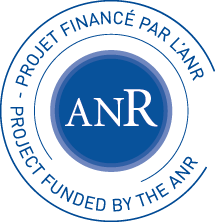



High frequency/high power microwave devices can contribute to respond to
the increasing demand in terms of security, sensing and communications. The
aim of this project is to demonstrate GaN based devices on Silicon substrate
with high output power density and efficiency as well as reduced propagation
losses opening the way for the fabrication of monolithic microwave integrated
circuits. Substrate choice is motivated by the low cost and the availability
of Silicon in large size, potentially leading to process cost reduction with
large scale processing tools. However, the starting material necessarily needs
to satisfy requirements in terms of structural and electrical quality, requirements
which are still yet difficult to reach in production environment. Indeed,
metal-organic chemical vapor deposition (MOCVD) is the preferred tool for
the crystal growth of GaN. It has led to high-quality GaN, large size production
tools has been developed (up to several times 8 inch wafers capacity) but
the high temperature involved in the growth process is a drawback for the
hetero-epitaxial growth on Silicon which necessitates trade-offs depending
on the target application. A first objective will be to develop such knowhow
not available in the literature to demonstrate MOCVD grown GaN high electron
mobility transistors (HEMTs) on Silicon for power applications at 40 GHz and
beyond. The project will focus first on the reduction of microwave propagation
losses through GaN based buffers and various templates on highly resistive
silicon. An optimization loop will be necessary to satisfy this criterion
as well as others like crystal quality and low strain to avoid cracks in the
films. The project is leaded by CRHEA which is in charge of crystal growth.
With the help of its partners GREMAN and IEMN, the critical interface between
the nucleation layer and the substrate will be studied. The growth conditions
for the nucleation layer will be monitored to satisfy the requirements for
a high electrical resistivity interface and buffer layer. The state of the
art results previously obtained with the molecular beam epitaxy (MBE) technique
will be a reference for this work. More, nucleation at low temperature with
MBE will be investigated as an alternative. Compared to Silicon, the larger
band gap and the chemical
inertness of cubic Silicon Carbide are advantages. The alternative solution
consisting in an intercalated Silicon Carbide buffer layer grown on Silicon
will be evaluated. To benefit the advantage of the small transit time of a
large density of carriers under a short gate (less than 100 nm), the transistors
must present a small distance separating the carriers from the gate (thin
barrier) as well as small access resistances. Today, the trade-off between
barrier thinning and resistance increasing has led to thicknesses of the order
of 15 nm and sheet resistances around 300 Ohm/sq in the case of AlGaN barrier.
This induces a noticeable access resistance in the device which becomes the
main limitation for operation beyond 30 GHz. The aim of the second task of
the project will be to develop solutions to repel this limitation. To do so,
the Aluminum content in AlGaN and InAlGaN barriers will be increased to enhance
the carrier density and to reduce the sheet resistance. The barriers will
be protected by a GaN cap or by in-situ grown SiN able to passivate the dangling
bonds present at the surface. More, in order to further reduce the access
resistances, N+ doped GaN contacts will be selectively regrown by MBE in growth
windows after etching of the barrier. This will avoid the high temperature
annealing of the contacts and then facilitate the fabrication of transistors
with gates very close to the source. In order to validate the HEMT structures
grown with low propagation losses, IEMN will perform the technology developments
and the device electrical characterizations, including the load pull measurements
of power performance at 40 GHz and beyond.

 ANR-16-ASTR-0006-01
ANR-16-ASTR-0006-01
Last update : 07/03/2018 - Copyright ©1996-2020 - CRHEA all rights reserved - If you have any question about this site, contact the webmaster - Legal notice